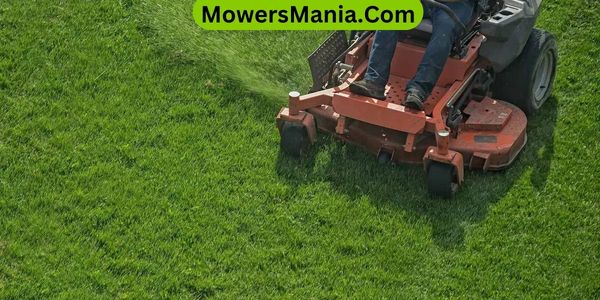If your lawn mower’s clutch is giving you trouble, don’t worry – you can fix it yourself.
In this article, we’ll guide you through the steps to diagnose and repair common clutch problems.
From checking the clutch cable to replacing worn-out components, you’ll learn how to get your lawn mower back in top shape.

So grab your tools and let’s get started fixing that pesky clutch issue.
Symptoms of Clutch Issues
If your lawn mower clutch is experiencing issues, you may notice that it slips or fails to engage properly when you try to mow.
This can be frustrating and may result in uneven or incomplete mowing. Another common symptom of clutch problems is unusual noises when the clutch is engaged, such as grinding or rattling sounds.
You might also feel a lack of power or responsiveness when you engage the clutch, making it difficult to control the mower effectively.
Additionally, if the clutch is failing, you may experience difficulty shifting gears or notice a burning smell coming from the mower.
When you encounter these symptoms, it’s important to address the clutch issues promptly to prevent further damage to your lawn mower. Ignoring these signs can lead to more extensive and costly repairs down the line.
Checking the Clutch Cable
To check the clutch cable on your lawn mower, start by disconnecting it from the engine. Follow these steps to ensure the clutch cable is in good condition and properly adjusted.
| Step | Action | Result |
|---|---|---|
| 1. Inspect the cable | Visually examine the clutch cable for any signs of fraying, kinks, or damage. | Identifying any visible issues with the clutch cable. |
| 2. Check cable movement | Engage and disengage the clutch lever while observing the movement of the cable. | Ensuring the cable moves smoothly without binding or excessive slack. |
| 3. Adjust the cable if necessary | If the cable is in good condition but the clutch is not engaging properly, adjust the cable tension. | Improving clutch engagement by ensuring the cable is properly tensioned. |
Adjusting the Clutch

After checking the clutch cable for any signs of damage and ensuring it’s properly adjusted, you can move on to adjusting the clutch to improve its engagement and performance.
Follow these steps to adjust the clutch:
- Locate the adjustment nut on the clutch cable. Loosen the locknut with a wrench and then turn the adjustment nut to either tighten or loosen the clutch cable. Tightening the cable will engage the clutch sooner, while loosening it will delay engagement. Experiment with small adjustments and test the mower to find the optimal engagement point for your cutting needs.
- Once the clutch cable is properly adjusted, you can move on to adjusting the clutch itself. Find the adjustment bolt on the clutch lever. Loosen the locknut and turn the adjustment bolt to set the proper clearance between the clutch lever and the clutch. This will ensure smooth and precise engagement when you press the clutch lever.
- After making these adjustments, test the lawn mower to ensure the clutch engages smoothly and at the desired point. Fine-tune the adjustments as needed until you achieve optimal performance.
Inspecting the Clutch Assembly
Examine the clutch assembly for any signs of wear or damage, including worn friction pads or broken springs.
Start by removing the mower deck to gain access to the clutch assembly. Once you have clear access, visually inspect the clutch for any obvious signs of wear or damage.
Check the friction pads for wear and tear, as these are crucial for the proper functioning of the clutch. If the pads are worn down, they’ll need to be replaced. Additionally, inspect the springs for any signs of breakage or damage.
Broken or damaged springs can lead to improper engagement and disengagement of the clutch, causing performance issues.
Ensure that all bolts and fasteners are securely tightened, as loose components can also cause clutch problems. Take note of any abnormalities or areas of concern during the inspection, as these will guide the next steps in addressing the clutch issues.
Regular inspection of the clutch assembly can help identify issues early and prevent more extensive damage to the clutch system.
Replacing the Clutch Components

First, remove the worn or damaged clutch components to prepare for replacement. Start by disconnecting the spark plug wire to ensure safety.
Then, use a wrench to loosen the bolt holding the clutch in place. Once the bolt is removed, carefully take out the old clutch assembly, making sure to keep track of the order of the components for reassembly.
Replacing the Clutch Components
- Relief: It can be frustrating to deal with a malfunctioning lawn mower clutch, but replacing the worn-out components brings a sense of relief. You’ll soon have a smoothly operating mower once again.
- Excitement: The prospect of revitalizing your lawn mower with new clutch components can bring a sense of excitement. You’ll be eager to see the improvement in performance.
- Satisfaction: As you successfully replace the clutch components, the satisfaction of a job well done and a fully functional lawn mower is sure to bring a feeling of accomplishment.
Frequently Asked Questions [FAQs]
Can I Fix a Lawn Mower Clutch Problem Without Having to Replace Any Parts?
You can fix a lawn mower clutch problem without replacing parts by adjusting the clutch cable or linkage, cleaning the clutch assembly, and checking for any debris or obstructions. Regular maintenance can help prevent future issues.
What Are the Common Causes of Clutch Problems in Lawn Mowers?
If your lawn mower’s clutch is acting up, common causes could be worn-out clutch plates or a loose clutch cable. Check for these issues first before considering more extensive repairs.
How Often Should I Inspect and Maintain the Clutch on My Lawn Mower?
You should inspect and maintain the clutch on your lawn mower at least once a year. Regular maintenance helps prevent potential problems and ensures the clutch operates smoothly, extending the overall lifespan of your mower.
Are There Any Specific Lubricants or Maintenance Products Recommended for Keeping the Clutch in Good Condition?
To keep the clutch in good condition, use specific lubricants and maintenance products recommended by the manufacturer. Regularly inspect and maintain the clutch to prevent problems and ensure smooth operation of your lawn mower.
Are There Any Safety Precautions I Should Take When Working on the Clutch of a Lawn Mower?
When working on the clutch of a lawn mower, always wear protective gear like gloves and goggles. Make sure the mower is turned off and the spark plug is disconnected to prevent accidental starts.
Conclusion
So, if you’re experiencing issues with your lawn mower clutch, don’t worry.
By checking the clutch cable, adjusting the clutch, and inspecting and replacing the clutch components if necessary, you can get your lawn mower back in working order in no time.
Just remember to regularly maintain and inspect your lawn mower to prevent future clutch problems.
Happy mowing!



